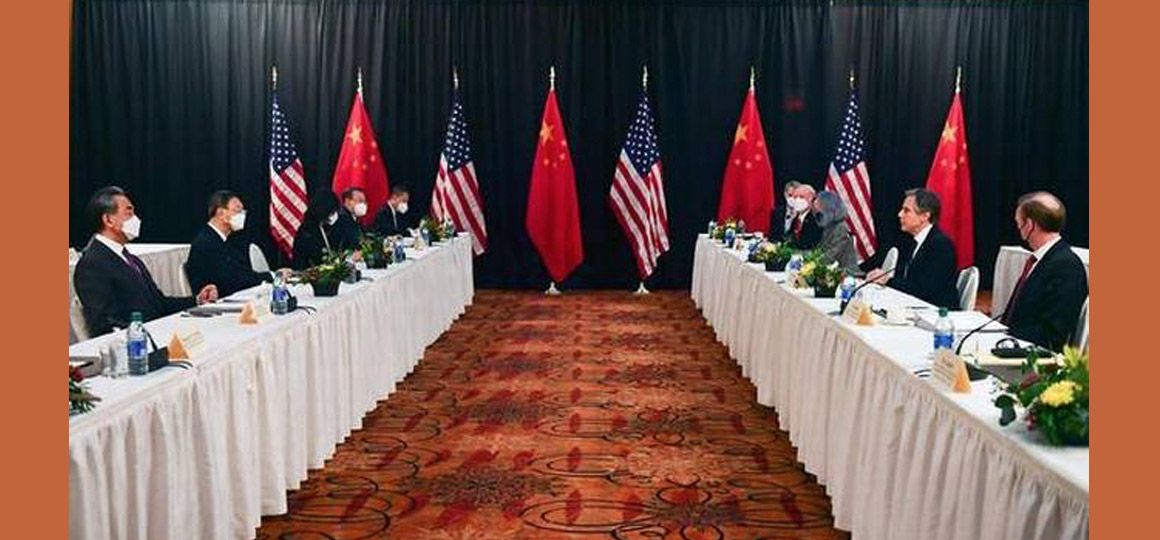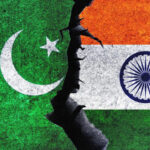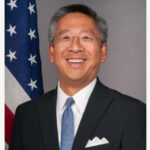The Quad partnership could mount a counter-challenge to China, but India’s steps will be more nuanced
A week after the first Leaders’ Summit of the Quadrilateral Framework, held on March 12, the message of the virtual meeting between leaders of Australia-India-Japan-the United States was delivered directly to Beijing, as U.S. Secretary of State Antony J. Blinken and Yang Jiechi, Chinese Communist Party Politburo member and Director of the Central Foreign Affairs Commission Office, accompanied by U.S. National Security Adviser Jake Sullivan, and Chinese Foreign Minister and State Councillor Wang Yi, met in Anchorage, Alaska.
Quad in focus
The message was broadly a three-pronged one: that under the new U.S. President, “America is back” in terms of its desire to play a leading role in other regions, that it views China as its primary challenger for that leadership, and that the Quad partnership is ready to mount a counter-challenge, albeit in “soft-power” terms at present, in order to do so. In the Quad’s joint statement — its first — and in the joint editorial by U.S. President Joe Biden and Prime Ministers Narendra Modi (India), Scott Morrison (Australia) and Yoshihide Suga (Japan), direct mentions of China may have been absent, but senior officials have made it clear that they were not overlooked in the conversation.
Briefing the media about the Quad Summit, Mr. Sullivan said that Quad partners had raised their issues with China, including: “[China’s] coercion of Australia, their harassment around the Senkaku Islands, their aggression on the border with India”, which were then taken up during the talks with Mr. Wang and Mr. Yang.
The fact that the talks in Alaska were prefaced by the Quad summit, as well as visits to Tokyo and Seoul (by Mr. Blinken and U.S. Defence Secretary Lloyd Austin; Mr. Austin will visit Delhi this weekend), and also a visit to Canberra by U.S. Indo-Pacific coordinator Kurt Campbell, is no coincidence, and part of the concerted messaging from Washington to Beijing. For both Japan and Australia, that are military allies of the U.S., and completely aligned on Indo-Pacific policy, the outcomes of the summit, both in terms of the “3C’s”working groups (established on COVID-19 vaccines, Climate Change and Critical Technology), and in terms of this messaging to the “4th C” (China) are very welcome.
Vaccine diplomacy
For India, however, the outcomes of the Quad Summit need more nuanced analysis. On the “3C’s Working groups”, it is clear that New Delhi is on board, but with some riders. The vaccine initiative, for example, is a major boost for India’s pharmaceutical prowess, which has already been proven during the current pandemic.
India is not only the world’s largest manufacturer of vaccines (by number of doses produced and sold globally), it has already exported 58 million doses to nearly 71 countries worldwide as commercial shipments, grants and those funded by the Gavi COVAX initiative. Manufacturing a billion doses for South East Asia (under the Quad), over and above its current international commitments, as well domestic goals to vaccinate 300 million people as originally planned by September (900 million adults in total, i.e. 1.8 billion doses) will require a major ramp up in capacity and funding, and will bear testimony to the power of Quad cooperation, if realised.
However, the effort could have been made much easier had India’s Quad partners also announced dropping their opposition to India’s plea at the World Trade Organization, which it filed along with South Africa in October 2020, seeking waiver from certain provisions of the Agreement on Trade-Related Aspects of Intellectual Property Rights for the prevention, containment and treatment of COVID-19. It is surprising that the summit did not seek to bridge differences over this issue (it has seen eight fractious rounds of talks in Geneva, with the next round expected in June 2021) when the leaders discussed how to increase India’s production capabilities.
Climate change, technologies
On climate change, India has welcomed the return of the U.S. to the Paris accord, after former U.S. President Donald Trump decided to walk out of American climate change commitments. However, while Mr. Biden has promised to restart the U.S.’s funding of the global Green Climate Fund, which Mr. Trump ended, India still awaits a large part of the $1.4 billion commitment by the U.S. to finance solar technology in 2016, which Mr. Trump subsequently slowed down on. Mr. Biden might also consider joining the International Solar Alliance, founded by India and France, which the other Quad members are a part of, but the U.S., which promised to do so in 2016, has resisted.
Meanwhile, on the Quad working group set up to cooperate on critical technologies, India will welcome any assistance in reducing its dependence on Chinese telecommunication equipment and in finding new sources of rare-earth minerals, but would oppose any move by the other Quad partners to weigh in on international rule-making on digital economy, or data localisation which had led New Delhi to walk out of the Japan-led “Osaka track declaration” at the G-20 in 2019.
http://Worldview with Suhasini Haidar | U.S-China meeting in Alaska
Handling China
It is on the “4th C”, however, where it is still unclear how far the Narendra Modi government can go on the Quad’s intended outcomes, especially on “collaboration, including in maritime security, to meet challenges to the rules-based maritime order in the East and South China Seas,” as the joint statement reads.
While India shares the deep concerns and the tough messaging set out by the Quad on China, especially after the year-long stand-off at the Line of Actual Control (LAC) and the killings at Galwan that India has faced, it has demurred from any non-bilateral statement on it. India is the only Quad member not a part of the military alliance that binds the others, the only Quad country with a land boundary with China, and the only Quad country which lives in a neighbourhood where China has made deep inroads. Indian officials are still engaged in LAC disengagement talks that have thus far yielded only a phase-1 disengagement at Pangong Lake; they have a long way to go to de-escalation or status quo ante.
The violence at the LAC has also left three long-term impacts on Indian strategic planning: First, the government must now expend more resources, troops, infrastructure funds to the LAC than ever before, in order to leave no part of the once peaceful LAC unmanned and ensure no recurrence of the People’s Liberation Army April 2020 incursions.
Second, that India’s most potent territorial threat will not be from either China or Pakistan, but from both, or what the Indian Army Chief Manoj Mukund Naravane called a “two-front situation”. Third, that India’s continental threat perception will need to be prioritised against any maritime commitments the Quad may claim, especially further afield in the Pacific Ocean.
Direction for India
The Modi government has said that it sees the Quad formation as it does its other multilateral commitments including the Shanghai Cooperation Organization (SCO) in Central Asia, BRICS (or Brazil, Russia, India, China, and South Africa) in the emerging economies, the South Asian Association for Regional Cooperation/Bay of Bengal Initiative for Multi-Sectoral Technical and Economic Cooperation in the neighbourhood, etc and seeks to broaden the space for its principle of Strategic Autonomy; not narrow its bilateral choices.
In that sense, the Quad’s ideology of a “diamond of democracies” can only succeed if it does not insist on exclusivity in India’s strategic calculations. Those who speak of Robert Kaplan’s book, Monsoon, which proposed a greater role for the U.S. in the Indian Ocean as the inspiration for America’s current Quad strategy, would do well to also read Mr. Kaplan’s sequel, The Revenge of Geography, in which he makes the case that the world “continues to evolve according to the dictates of physical terrain, frustrating the proponents of human agency”. The truth is, despite last week’s Quad Summit, India’s choices for its Quad strategy will continue to be guided as much by its location on land as it is by its close friendships with fellow democracies, the U.S., Japan and Australia, across the seas.






NO COMMENT